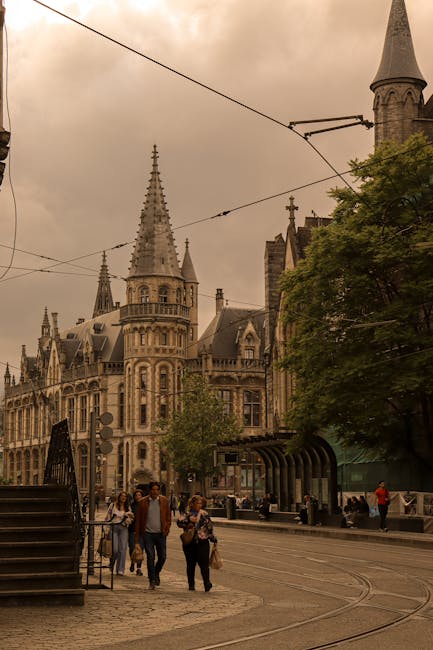Exploring Manchester’s Historic Landmarks: A Comprehensive Guide
Manchester, a vibrant city in the heart of the United Kingdom, is renowned for its rich history and cultural heritage. From Victorian architecture to iconic industrial sites, Manchester’s historic landmarks offer a glimpse into its fascinating past. Whether you are a history enthusiast or a curious traveler, this comprehensive guide will take you through the must-visit historic landmarks in Manchester, providing insight into the city’s evolution over the centuries.
The Origins of Manchester
The history of Manchester dates back to Roman times when it was established as a fort known as Mamucium. Over the centuries, Manchester evolved into a bustling industrial city, earning the nickname “Cottonopolis” during the Industrial Revolution. Today, the city embraces its rich heritage, with numerous landmarks preserving its storied past.
Iconic Victorian Architecture
Manchester Town Hall
One of Manchester’s most iconic landmarks is the Manchester Town Hall, a stunning example of Victorian neo-Gothic architecture. Completed in 1877, the Town Hall features an impressive clock tower and intricate interior detailing. Follow a guided tour to explore its grand halls and learn about the city’s governance and architectural history.
John Rylands Library
The John Rylands Library, opened in 1900, is another architectural marvel. Located on Deansgate, the library houses a vast collection of rare books and manuscripts. The building itself is a masterpiece of Gothic Revival style, offering a serene and inspiring atmosphere for visitors and scholars alike.
Industrial Heritage Sites
Museum of Science and Industry
To understand Manchester’s pivotal role during the Industrial Revolution, visit the Museum of Science and Industry. Located on the site of the world’s first passenger railway station, the museum showcases Manchester’s industrial innovations and scientific advancements. Explore interactive exhibits, including steam engines and textile machinery, to gain a deeper understanding of the city’s industrial heritage.
Ancoats: The World’s First Industrial Suburb
Ancoats, often referred to as the world’s first industrial suburb, is an area steeped in history. Once dominated by textile mills, Ancoats has undergone significant regeneration, blending its industrial past with modern developments. Stroll through the historic streets, visit the Halle St Peter’s concert venue, or enjoy a meal at one of the trendy eateries housed in repurposed mill buildings.
Cultural and Artistic Landmarks
The Whitworth Art Gallery
For art lovers, the Whitworth Art Gallery is a must-visit destination. Nestled within Whitworth Park, the gallery boasts an extensive collection of contemporary and historic artworks. The recent expansion of the gallery seamlessly integrates the building with its surrounding natural landscape, providing a unique cultural experience.
Royal Exchange Theatre
The Royal Exchange Theatre, housed within a former cotton exchange, is a testament to Manchester’s creative spirit. The theatre’s distinctive design features a seven-sided steel and glass module suspended within the building’s Great Hall. Catch a performance to experience world-class theatre in an architecturally significant setting.
Preserving Manchester’s Heritage
Efforts to preserve Manchester’s historic landmarks are crucial to maintaining the city’s cultural identity. Organizations such as the Manchester Historic Buildings Trust work tirelessly to protect and restore significant sites, ensuring they remain accessible to future generations.
Practical Tips for Visiting Manchester’s Historic Landmarks
Plan Your Visit: Before embarking on your tour, research the opening hours and entry fees for each landmark. Some sites offer free admission, while others may require advance booking.
Use Public Transport: Manchester is well-connected by public transport, making it easy to navigate the city. Consider purchasing a Metrolink travelcard for convenient access to various landmarks.
Join a Guided Tour: To gain a deeper understanding of Manchester’s history, consider joining a guided tour. Knowledgeable guides can provide valuable insights and anecdotes about the landmarks you visit.
Explore Beyond the City Centre: While many historic landmarks are located in Manchester’s city centre, don’t forget to explore the surrounding areas. Sites such as Wythenshawe Hall and Heaton Park offer additional historical and architectural wonders.
Conclusion: Embrace Manchester’s Rich Heritage
Manchester’s historic landmarks are a testament to the city’s dynamic past and cultural evolution. From striking Victorian architecture to remnants of its industrial prowess, each site offers a unique story waiting to be discovered. By exploring these landmarks, you not only embrace Manchester’s heritage but also gain a deeper appreciation for its enduring spirit. So, whether you’re a local or a visitor, take the time to delve into Manchester’s history and experience the city through its remarkable landmarks.
For more information on planning your visit to Manchester, consider checking out resources provided by the Visit Manchester website.






